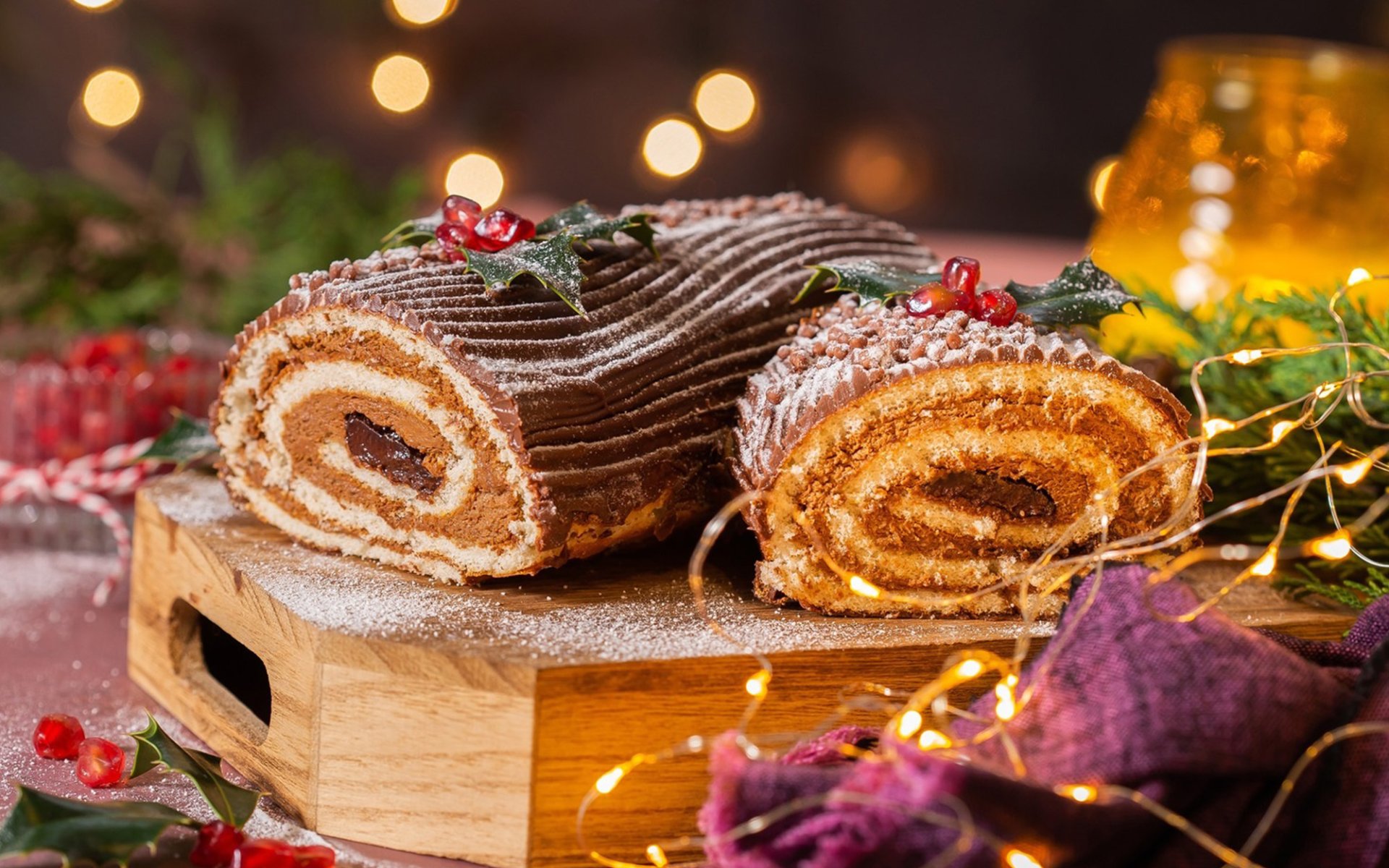Yule Log

Amidst the joyful celebrations of winter, one food has become an important symbol of the Christmas season: the Yule Log, or as the French call it, Bûche de Noël. Today, Rimping Supermarket invites you to delve into the history behind this delightful dessert.
Origins from Ancient Rituals: Winter Solstice and the Yule Log
The origin of the Yule Log can be traced back to ancient rituals known as the Winter Solstice, which celebrates the shortest day and longest night of the year. This occurs during the winter in each hemisphere; in the Northern Hemisphere, the solstice typically falls in December, while in the Southern Hemisphere, it's usually in June.
However, this celebration originally stemmed from the ancient Norse people residing in Scandinavia. Families would burn a large log, known as the Yule Log, in their hearths to commemorate the return of the sun after long, dark nights. This symbolized hope and a new beginning.
As time passed, this celebration gradually merged with the European Christmas festivities. During the Christmas season, Europeans would burn large logs in their fireplaces every evening for 12 days, starting from Christmas Day and continuing into the New Year. If any part of the log remained after the 12th night, they would carefully preserve it in their homes until the following Christmas, when it would be burned again, believed to bring good luck.
According to Christmas records, people across various European countries used different types of wood for burning. For example, in England, oak wood was favored, in Scotland, birch wood, and in France, cherry wood. Furthermore, in France, the logs were often anointed with wine before burning to enhance their aroma when lit.
The Birth of Bûche de Noël
Later, in the 19th century, as people began burning fewer logs, French pastry chefs conceived the idea of creating a long, cylindrical sponge cake resembling a log. This was done to perpetuate the tradition of burning the Yule Log during Christmas. This cake became known as Bûche de Noël, which means "Christmas log," a perfect adaptation of an ancient custom into a sweet treat.
After its introduction, Bûche de Noël quickly gained popularity in France. It is typically prepared by rolling a sponge cake with a rich cream or ganache filling. The exterior is then covered with chocolate buttercream, shaped and textured to imitate a tree log, and finally decorated with festive ornaments such as marzipan mushrooms, meringue snow, or chocolate leaves to make it look realistic and beautiful.
Global Popularity and Modern Evolution
Over time, Bûche de Noël became an integral part of Christmas traditions across Europe and around the world. Each culture added its unique touch, and with modern culinary techniques, Bûche de Noël now comes in various forms, including gluten-free, vegan, and dairy-free lactose-free versions, catering to diverse tastes and dietary preferences of consumers.
Beyond its delightful taste, Bûche de Noël continues to represent hope, warmth, and the promise of a new beginning. On Christmas Day, families gather around beautifully decorated tables laden with festive dishes, sharing meals with joy and contentment. It stands as a symbol of happiness and family togetherness.


